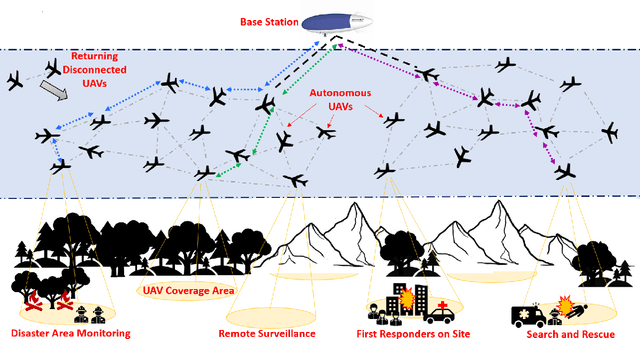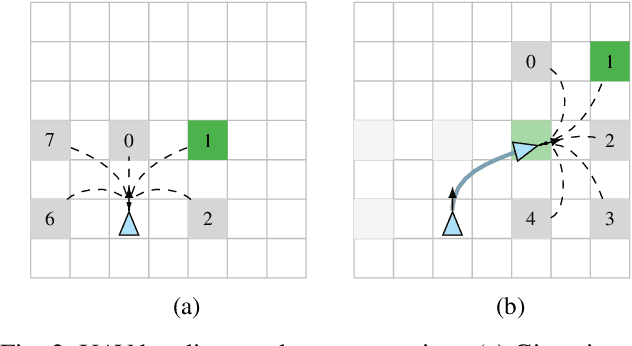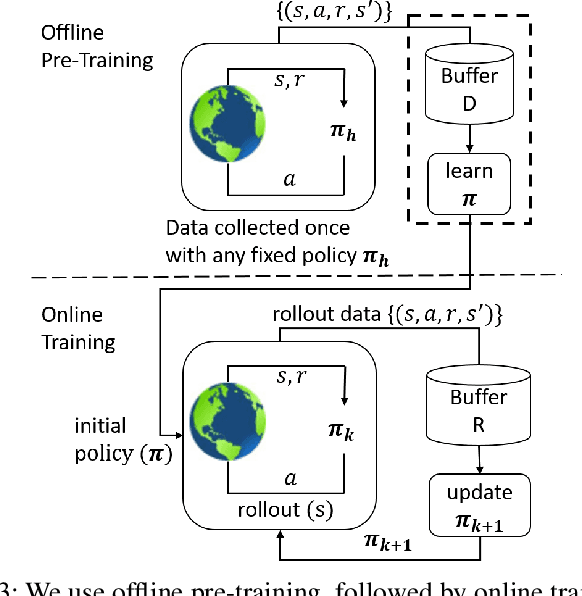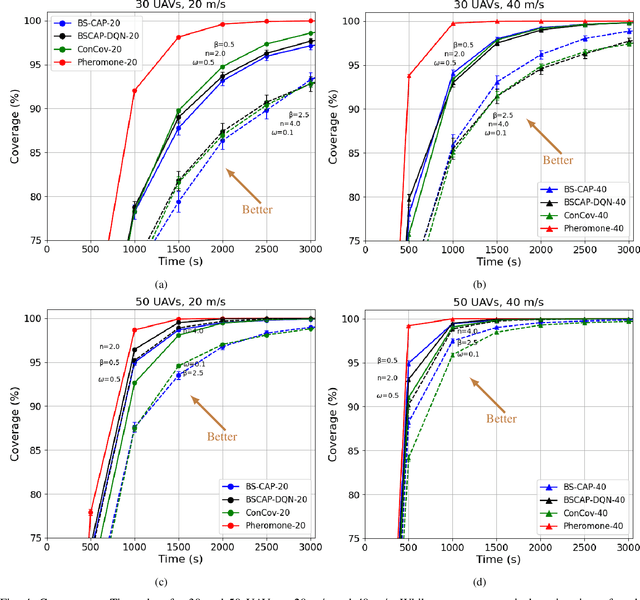A Deep Q-Learning based, Base-Station Connectivity-Aware, Decentralized Pheromone Mobility Model for Autonomous UAV Networks
Paper and Code
Nov 28, 2023



UAV networks consisting of low SWaP (size, weight, and power), fixed-wing UAVs are used in many applications, including area monitoring, search and rescue, surveillance, and tracking. Performing these operations efficiently requires a scalable, decentralized, autonomous UAV network architecture with high network connectivity. Whereas fast area coverage is needed for quickly sensing the area, strong node degree and base station (BS) connectivity are needed for UAV control and coordination and for transmitting sensed information to the BS in real time. However, the area coverage and connectivity exhibit a fundamental trade-off: maintaining connectivity restricts the UAVs' ability to explore. In this paper, we first present a node degree and BS connectivity-aware distributed pheromone (BS-CAP) mobility model to autonomously coordinate the UAV movements in a decentralized UAV network. This model maintains a desired connectivity among 1-hop neighbors and to the BS while achieving fast area coverage. Next, we propose a deep Q-learning policy based BS-CAP model (BSCAP-DQN) to further tune and improve the coverage and connectivity trade-off. Since it is not practical to know the complete topology of such a network in real time, the proposed mobility models work online, are fully distributed, and rely on neighborhood information. Our simulations demonstrate that both proposed models achieve efficient area coverage and desired node degree and BS connectivity, improving significantly over existing schemes.
 Add to Chrome
Add to Chrome Add to Firefox
Add to Firefox Add to Edge
Add to Edge